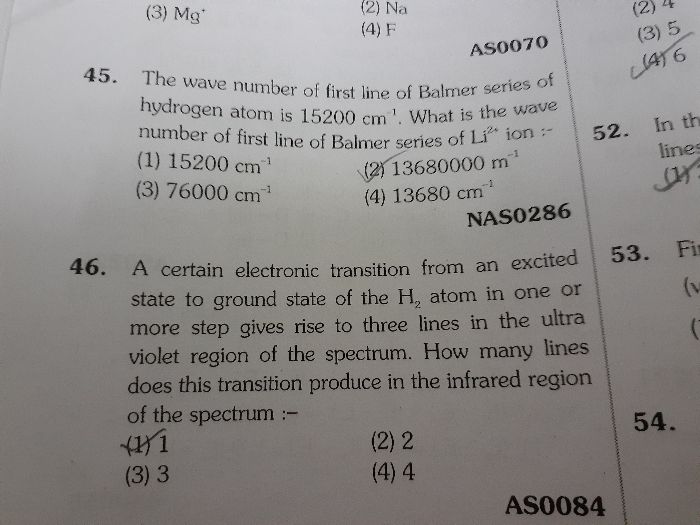CBSE Class 11-science Answered
electronic configuration of Cr3+
Asked by adityalearn28 | 28 Sep, 2010, 10:37: PM
Cr has electronic configuration [Ar]4s1 3d5
Cr3+ has [Ar]4s1 3d2.
means, electron will go from 'd' orbital because its easy to get out electron from outer shell.
we sometimes deviate from aufbau in those elements having high atomic number because of very less energy gap between the successive orbitals.
HUNDS RULE:
When several orbitals of equal energy are available, electrons enter singly with parallel spins
|
|||
|
HUND'S RULE OF MAXIMUM MULTIPLICITY
|
|||
| According to Hund's rule of maximum multiplicity: | |||
| 1. The electrons tend to avoid being in the same orbital.Thus as the electrons are successively added, a maximum number of electrons will try occupy orbitals singly. | |||
| . | |||
| 2. When all the orbitals are singly occupied only then the pairing of electrons commences. | |||
| . | |||
| 3. In the ground state, the electrons occupying the orbitals singly will have their spin parallel. | |||
| . | |||
| Hund's rule indicates that the electronic arrangement |
|||
|
EXPLANATION
|
|||
| N (Z = 7) : | |||
| CORRECT AND STABLE ELECTRONIC CONFIGURATION = 1s2, 2s2, 2px1, 2py1, 2pz1 | |||
| WRONG AND UNSTABLE ELECTRONIC CONFIGURATION = 1s2, 2s2, 2px2, 2py1, 2pz0 | |||
Answered by | 28 Sep, 2010, 11:44: PM
Application Videos
Concept Videos
CBSE 11-science - Chemistry
Asked by ammu32811 | 20 Feb, 2024, 08:58: AM
CBSE 11-science - Chemistry
Asked by ee7511641 | 13 Jan, 2024, 03:37: PM
CBSE 11-science - Chemistry
Asked by kv3582976 | 11 Oct, 2023, 06:57: AM
CBSE 11-science - Chemistry
Asked by o230397 | 23 Sep, 2023, 02:48: PM
CBSE 11-science - Chemistry
Asked by shrreya27harshitha | 17 Jul, 2022, 04:15: PM
CBSE 11-science - Chemistry
Asked by habibakhatoon112 | 15 Jul, 2022, 09:14: PM
CBSE 11-science - Chemistry
Asked by deba.biswas561 | 14 Jun, 2022, 08:07: AM
CBSE 11-science - Chemistry
Asked by advssdrall | 12 Jan, 2022, 05:12: AM
CBSE 11-science - Chemistry
Asked by ks1221516 | 14 Nov, 2021, 06:46: PM
CBSE 11-science - Chemistry
Asked by akankhyapradhan123 | 22 Oct, 2021, 07:29: PM









